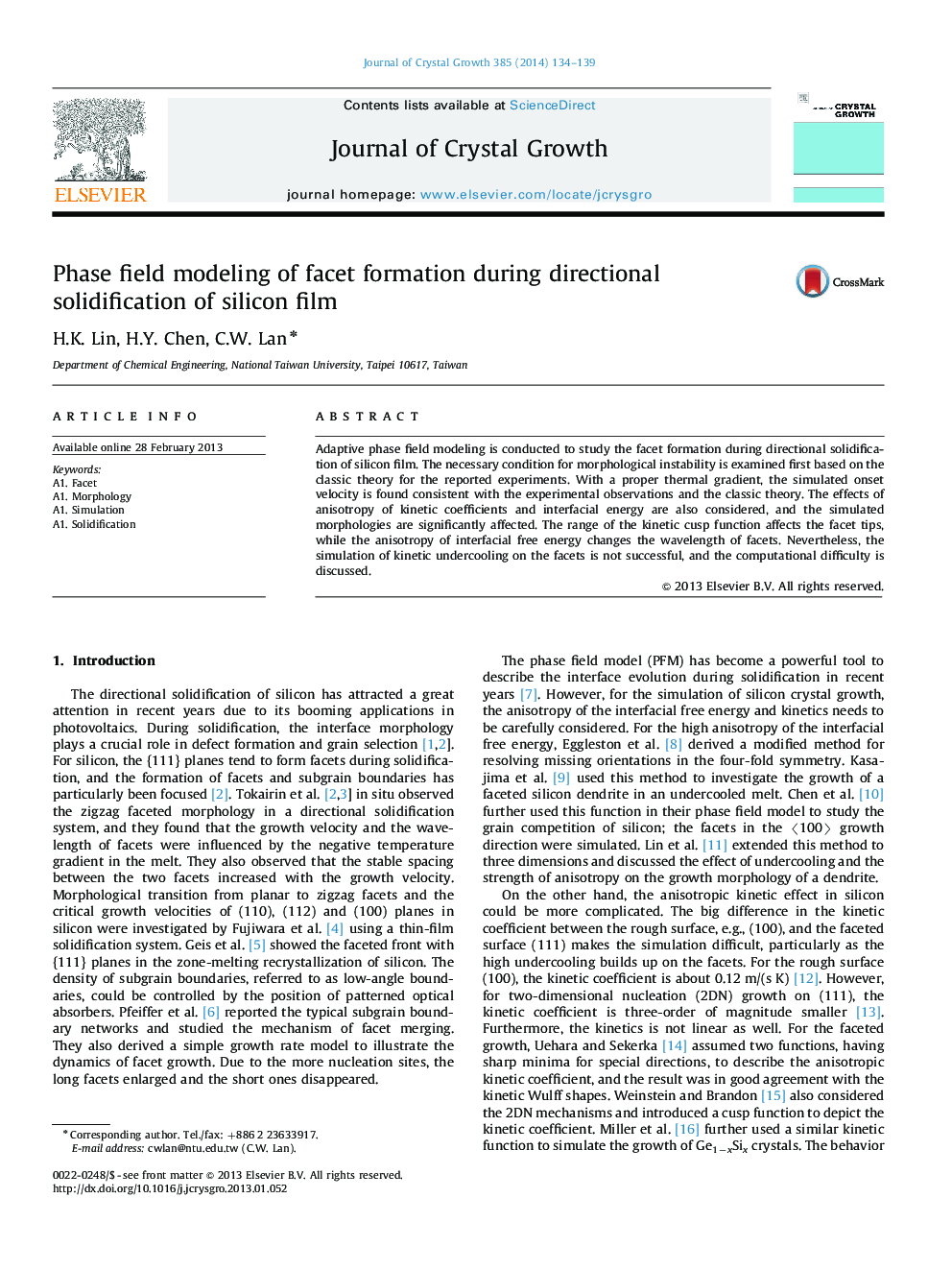| Article ID | Journal | Published Year | Pages | File Type |
|---|---|---|---|---|
| 1790638 | Journal of Crystal Growth | 2014 | 6 Pages |
Adaptive phase field modeling is conducted to study the facet formation during directional solidification of silicon film. The necessary condition for morphological instability is examined first based on the classic theory for the reported experiments. With a proper thermal gradient, the simulated onset velocity is found consistent with the experimental observations and the classic theory. The effects of anisotropy of kinetic coefficients and interfacial energy are also considered, and the simulated morphologies are significantly affected. The range of the kinetic cusp function affects the facet tips, while the anisotropy of interfacial free energy changes the wavelength of facets. Nevertheless, the simulation of kinetic undercooling on the facets is not successful, and the computational difficulty is discussed.
► Necessary temperature gradients for facet formation. ► Adaptive thin-interface phase field model for facet simulation. ► Reasonable agreement with experiments in the overall facet morphology, wavelength, and onset velocity. ► Discrepancy exists in the facet undercooling.
